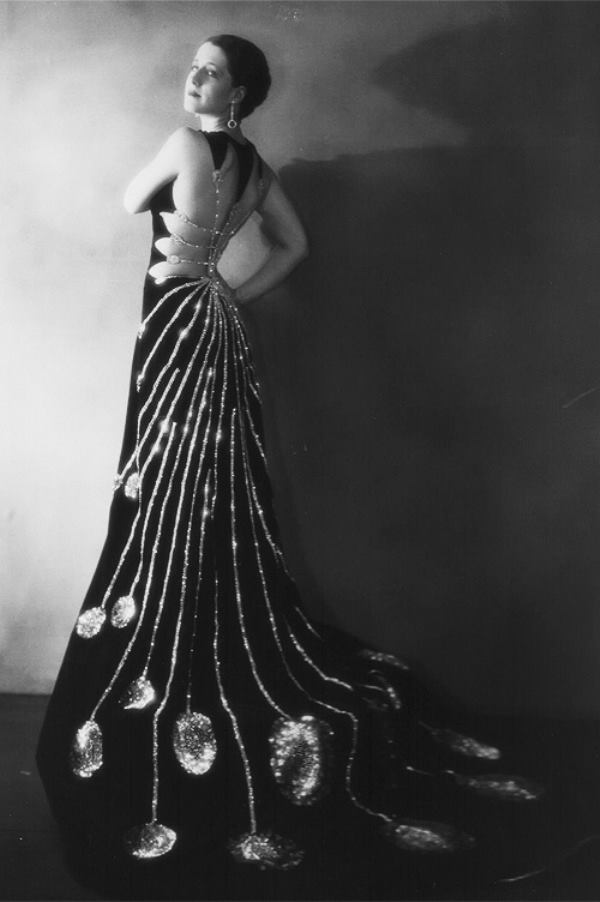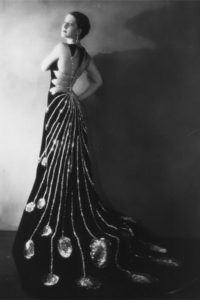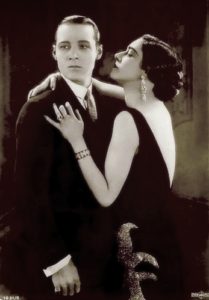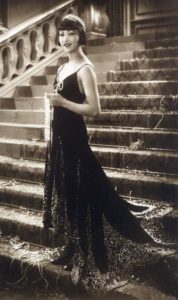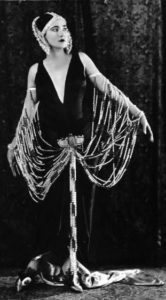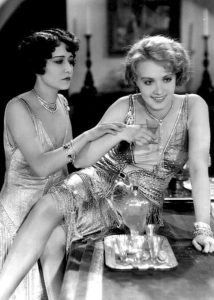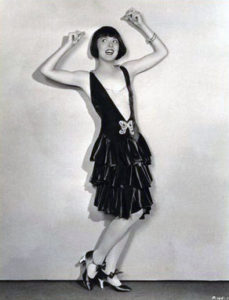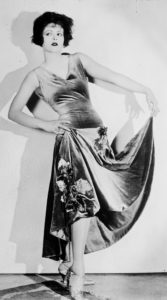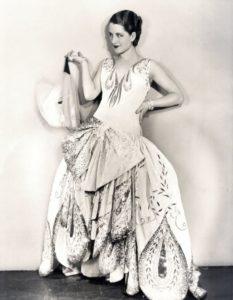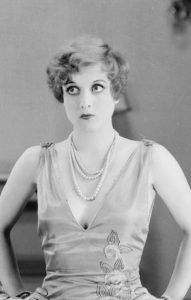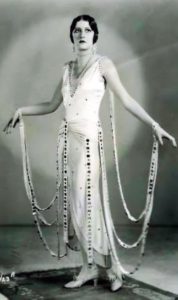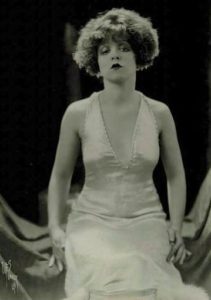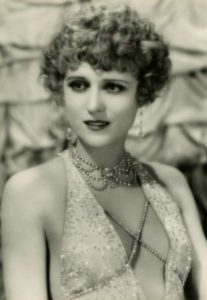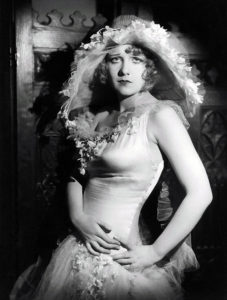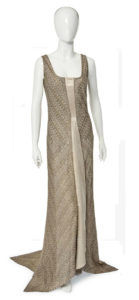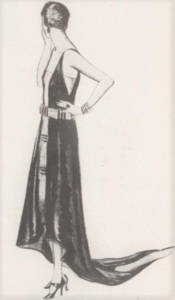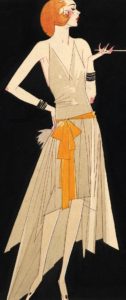Right now I am working on two velvet gowns inspired directly from two that were used for film of the late 1920s, these are very representative of a style worn through the 1920s.
I have endeavoured to credit the design or wardrobe team where possible.
Vilma Banky in The magic Flame (1927, uncredited designer), and Norma Shearer in Upstage (1926, Kathleen Kay*, Maude Marsh and André-ani).
Both of these gowns are from the height of the flapper era, and yet both are designed to cling to the body from shoulder to hips. And they are not alone!
Nita Naldi, Cobra (1925, Adrian), Anna May Wong, Nita Naldi Cobra, (1925, Adrian)
These gowns are clearly designed to make a stark visual impact and yet the materials are soft and flow around the body.
These gowns have defined body shaping. It is achieved using inserts and cutouts to take in or spread out V shaped elements- using decorative elements to achieve a closer fit, and was used a lot in the 1920s to shape clothing.
From experience it is a style that is best draped on the stand. French bias* is used through the 1920s which affects stretch in seams and this style makes most use of barely diagonally cut fabric.
It can be seen on long clinging gowns, short gowns, and even what I am calling a demi skirt- a flared rather than gathered skirt that ends below the knees and before the ankles.
A hip seam (straight or also v shaped) is of benefit in anchoring the bodice to the torso especially for skirts that are gathered or flared.
*french bias is barely off the grain and is usually used on the CF line. True bias is cut at 45 degrees to the grain. A lot of shaping of this time is not true bias, but uses the same extra ease offered from french bias
Dorothy Sebastian & Anita Page, Our Dancing Daughters (1928, David Cox), Colleen Moore, Clara Bow
Norma Shearer, The Last of Mrs Cheyney (1929, Adrian), Joan Crawford, Our Dancing Daughters (1928, David Cox).
And the fit was even used for Robes de Style!
Arlette Marchal, Clara Bow, Jacqueline Gadsen
Anita Page, Our Modern Maidens (1929, Adrian)
In this case the fit is from the hips up to underbust at the side and then the excess from the bust is eased into the scooped neckline.
Paul Poiret evening gown, 1920s, Christies auctions.
This gown makes use of the seaming needed to create the geometric patterns to also fit to the body. This use of decorative seams to hide functional seams can also be seen in Patterns of Fashion, a blue silk crepe dress from 1925 has teardrop shaped panels that are used to take in or spread the ground fabric.
1921 evening dress, Les modes, “where there’s smoke” by Patterson.
